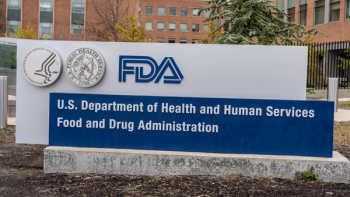
- Pharmaceutical Executive-11-01-2015
- Volume 35
- Issue 11
Pharm Exec's Pipeline Report: Twisting the Spigot
Building on our annual look at the industry's product pipeline, four key themes stand out that are driving the fast-changing environment for drug development.
This month, Pharm Exec takes its
are better aligned with unmet medical need. “Me-too” drugs designed to grab that extra helping of profits with no heavy lifting on the clinical side are now the exception, not the rule.
The latest FDA statistics on the 29 novel drug approvals so far this year provide the proof point. Fifteen of the 29 secured status under the FDA’s four review categories covering the best, most advanced science-Accelerated, Breakthrough, Priority, and Fast Track-while seven drugs won separate listing as orphan drugs for patients with rare, usually untreatable diseases. One drug, Avycaz, from Actavis, was also selected as a Qualified Infectious Disease Product (QIDP), the fifth industry-developed medicine approved to address the absence of therapies for drug-resistant, life-threatening bacterial infections.
Building on Senior Editor Casey McDonald’s timely synthesis of 2016’s best new fields and targets, I see four key themes driving the fast-changing environment for drug development.
The first is complexity. This is due to convergence between great science; the interpretive power of information processing technologies; and rising clinician and patient expectations. R&D priorities, once focused on the open-ended metric of delivering the biggest number of “shots on goal,” now rest on a precise commitment to quality, not volume. There is significantly more risk, not to mention expense, in applying advanced tools of molecular biology to find the right target in the right patient population and to ensure the target is translatable to a human disease. This, in turn, requires data and evidence, relevant to that disease state, to prove the target can fulfill its potential as a clinically differentiated, reimbursable medicine that appeals to payers.
Most important, all this must be done very early in the commercialization cycle, so far forward that the original depiction of disease states may be altered beyond recognition by competitor successes or progress in the underlying science. All told, the basic activities of new drug development have morphed from simply proving, on the basis of narrowly hypothesized criteria, why a compound should be licensed to justifying, to a much larger group of stakeholders, why that compound should actually be prescribed.
This leads to our second theme, which is diversity. This can be measured in many ways, beginning with the sheer proliferation of research collaborations, which are now common among big Pharma firms that just a decade ago shunned them on competitive grounds. R&D is also being shaped by the erosion of the traditional separation between the pharmaceuticals, biotech, and generic sides of the business. Binding all is a competitive push to innovate, even in generics, where process, quality, and supply chain excellence are critical to counter increased pressure on margins. For biotech and pharma, convergence has made the search for talent more mobile and competitive, especially as smaller start-ups find it easier to staff up with exiles from the biggest R&D players.
And there is the direct engagement of non-profit professional and patient organizations in drug development, exemplified by the Cystic Fibrosis Foundation’s pioneering venture philanthropy model: a modest $150 million stake it took back in 2000 on a promising Vertex drug candidate, Kalydeco, paid off handsomely last year when it sold its royalty rights for $3.3 billion, instantly giving it a research budget equivalent to any mid-sized pharma.
While there is a solid rationale for this and other public-private partnerships, especially at the pre-competitive stage, questions remain on whether the proliferation of deals might be causing duplication that is wasteful of R&D investment and the efficient deployment of scarce human resources. We may see pressure for more international agreement before proceeding with individual programs.
The third theme is transparency, evidenced by the continuing efforts of government, academia, and NGOs to promote “open innovation” models, dismantle IP standards, and regulate disclosure of trial results. Post-marketing study requirements-now estimated to comprise a fifth or more of overall drug-development costs-are being driven as well by the push to shed light on real-world safety, side-effects, and the overall “value“ of medicines in the clinical setting.
We end with viability. While it is premature to declare the death of big Pharma’s R&D mojo, suggestions abound about ways to do it better. We can start with the low-cost “frugal innovation” embodied by China and India. Adjacent businesses like Google and Apple may never actually develop or deliver drugs, but they have a far stronger hand in leveraging big data around a preventive, consumer-friendly health and wellness agenda. This strategy poses an alternative to the disease-centric “treat and cure” model of big industry R&D organizations.
Measuring against these four themes is one way to chart the future course of this ever-challenging ecosystem of R&D. Prepare to be disrupted.
William Looney is Editor-in-Chief of Pharm Exec. He can be reached at
Articles in this issue
about 10 years ago
Pharm Exec's 2016 Pipeline Reportabout 10 years ago
The 'Prosolidate' Push: New Agency Service Mixabout 10 years ago
Strength From the Few: The NORD Summitabout 10 years ago
Market Access Reinventedabout 10 years ago
Drug-Pricing Backlash Reaches Fever Pitchabout 10 years ago
The Push for a Pull Supply Chainabout 10 years ago
Think Globally, Act Locallyabout 10 years ago
Precision Medicine's March to Market: 'Pairing' for Successabout 10 years ago
Drug-Pricing Backlash Reaches Fever Pitchabout 10 years ago
Country Report: TurkeyNewsletter
Lead with insight with the Pharmaceutical Executive newsletter, featuring strategic analysis, leadership trends, and market intelligence for biopharma decision-makers.




